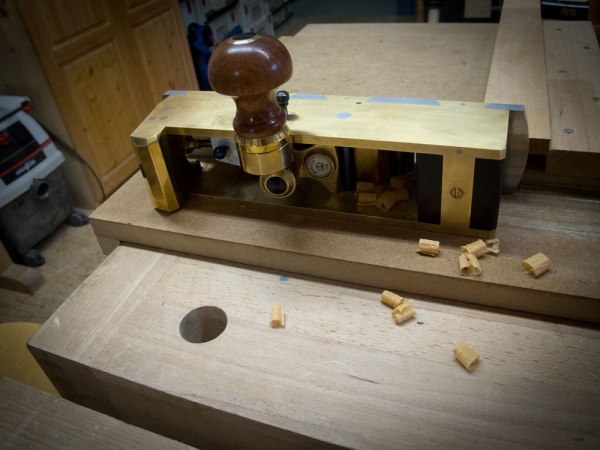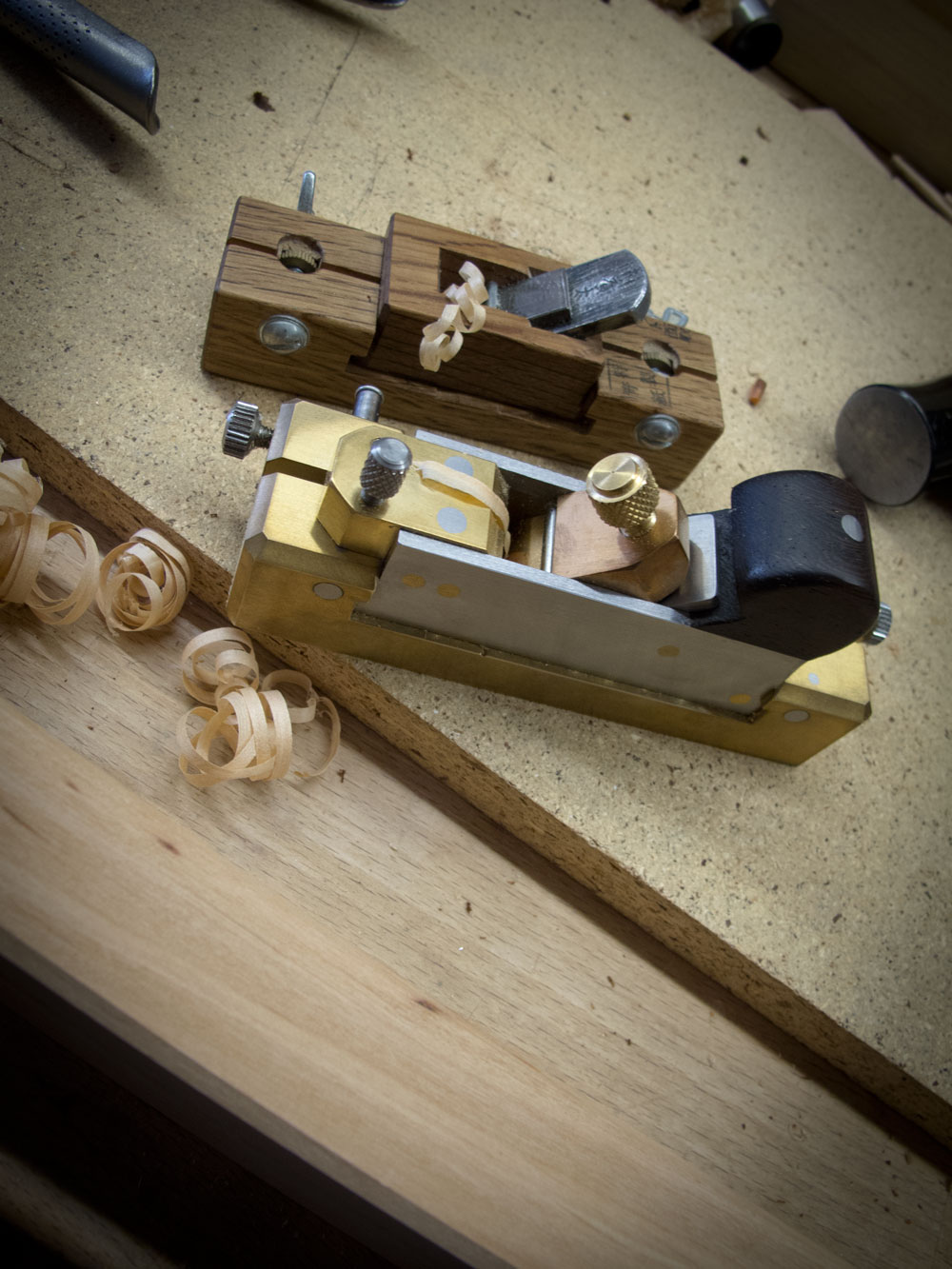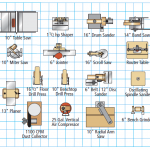We may receive a commission when you use our affiliate links. However, this does not impact our recommendations.
At Woodworking in America 2010, the award for having traveled the farthest went to Philip Marcou, a toolmaker in New Zealand. I was joking on Twitter a few days ago that we were looking at New Zealand as a potential site for a future conference (in which case we’d have to call it Woodworking Ex America, I suppose)…because I desperately want to go there. We’re not, of course; while I’m willing to drive a 23′ foot to Winston-Salem chock-full of benches and tools, I’m not willing to pilot a ship across the Pacific (is that even what one does with a ship? Pilot it?).
For Woodworking in America 2014, the lengthiest travel award (the prize for which is a cookie if he asks me nicely) goes to Chris Vesper, of Vesper Tools, from Australia (and I believe this is his third WIA – I’ll should treat him to a coffee, too!).
And I don’t know…maybe it’s just the mystique I associate with their country of origin, but I really like the look of Philip’s planes; I’m sorry we won’t have him on hand in this year’s marketplace to show them off. He deserves to be better known on this side of the Pacific. So here’s a post I borrowed from Christopher Schwarz’s Lost Art Press blog (with his permission) – reading about them is not the same as trying them out, but…
One of my students in Germany is a fan of planes by Philip Marcou, the New Zealand toolmaker. After attracting a lot of attention in the bowsaw class with his Marcou smoother, Martin Gerhards of Munich offered to bring in the Marcou planes he owns.
I’ve only gotten to use one of Marcou’s planes extensively, which I borrowed for a 2007 review of it for The Fine Tool Journal (the review also appears in my book “Handplane Essentials”). So it was interesting to see a group of planes from the maker that have been built since then.
I didn’t get to use the planes as much as I wanted to – I was pretty tied up with teaching the classes. But during a couple slow moments I was able to inspect and use some of the planes – and take some photographs.
The plane I got to use the most was the M12 miter plane, a massive (nearly 10-pound) beast that I used on the shooting boards of Dictum GmbH. It might just be the heaviest plane I’ve ever used, but it didn’t feel that way on the shooting board, where it plowed through the end grain of all the European hardwoods I got my hands on in the shop Dictum.
All of the Marcou planes are characterized by their mass, which is a notch above the typical plane forms and a dividing line between many hand-tool woodworkers (see the specs of Marcou’s planes here). Some woodworkers hate heavy planes; other seek them out. I can work either way, but I can tell you that when I shoot with a plane, I look for mass. Mass helps a lot.
So the M12 miter plane was a total joy for me to use. Every part of the plane was made perfectly, from the pinned dovetails in the sole to the precise blade adjuster. The plane can be adjusted for right- or left-handed users. You can even move its massive knob to a position above the toe if you want to use the plane more like a smoothing plane.
The only ding I can give to the plane is the raised area above the heel of the tool – above the blade adjuster. This chamfered brass area prohibits you from capturing the miter plane in a track, like you can with a Stanley No. 9, No. 51, a traditional English miter plane or one of its modern equivalents. This is a small complaint, as the tool is easy to wield without a track once you get the feel for it.
The second Marcou plane I got to use was the J20, a jack plane that Gerhards had set up more like a try plane. Once again, it is a heavy tank of a plane that could charge through nots and dense grain with little or no vibration.
The nicest detail of the plane is the adjustable mouth. It’s a small plate in front of the iron that is easily movable – not just forward and back but even skewed. This feature makes it super easy to move close and mimic the position of the iron.
You can see more photos of the J20 on Marcou’s site here.
The third plane I spent any time with was a custom chamfer plane that Gerhards commissioned. It’s an adaptation of a Japanese wooden chamfer plane that has a movable fence and – like the original – a body that shifts laterally so you can expose a fresh part of the iron.
Marcou greatly improved the fence-adjustment mechanism, which slides on bars and locks with a single thumbscrew. The fence on the original adjusts with two wing-nuts that lock against spin-wheels. The original is clumsy to adjust; Marcou’s is simple.
The blade adjusts to a perfect cutting position by dropping into small grooves in the fence pieces. All-in-all, it’s a pretty amazing adaptation of a traditional tool.
Also, since my 2007 review, Marcou has vastly expanded his web site. You can check out all the details, including lots of photos, by visiting his site here.
— Christopher Schwarz
p.s. To see more of Chris’ pictures of the Marcou planes, see the slide show at the bottom of the original post at Lost Art Press.
Here are some supplies and tools we find essential in our everyday work around the shop. We may receive a commission from sales referred by our links; however, we have carefully selected these products for their usefulness and quality.











I typically spell knots with a ‘k’.